20 ways to play guitar like Jimmy Page
Learn the Led Zeppelin icon's riffing and soloing approaches, tone tips and altered tunings – everything but the violin bow!
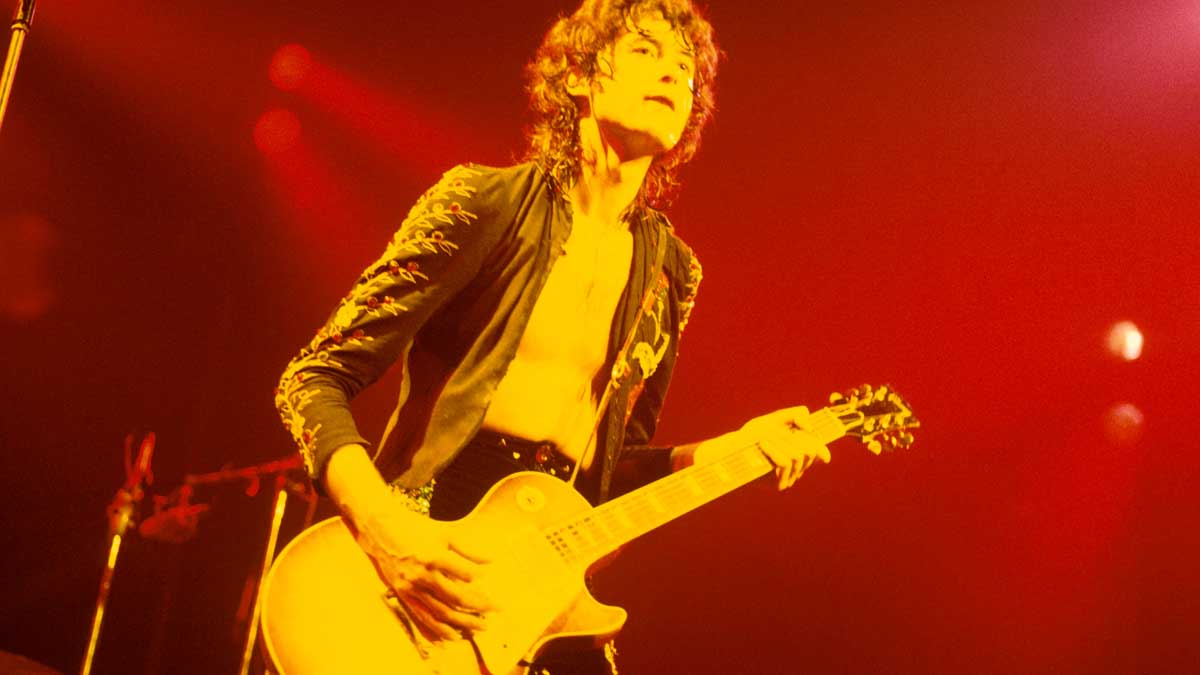
Brian May recently referred to Jimmy Page as “a master of invention”, and we’d have to agree, especially on the subject of riffing.
Few, if any, can claim to have laid down quite so many cracking riffs as Page. Whole Lotta Love, Heartbreaker, Kashmir – we could go on!
So, what’s the secret? Well, it’s not so much a secret – just a little required knowledge. From the pentatonic scale to some signature chord shapes, we’ll look at the techniques behind the Led Zeppelin legend’s style.
20 ways to play like Jimmy Page – Riffing
1. Start with pentatonics

Many of Jimmy’s riffs are based in the minor pentatonic scale (Black Dog, Heartbreaker, Moby Dick) and include octave jumps (Immigrant Song, The Wanton Song).
Here we see these two techniques in A minor combined with chromatic passing notes to tie them together.
2. Take influence from early rock 'n' roll
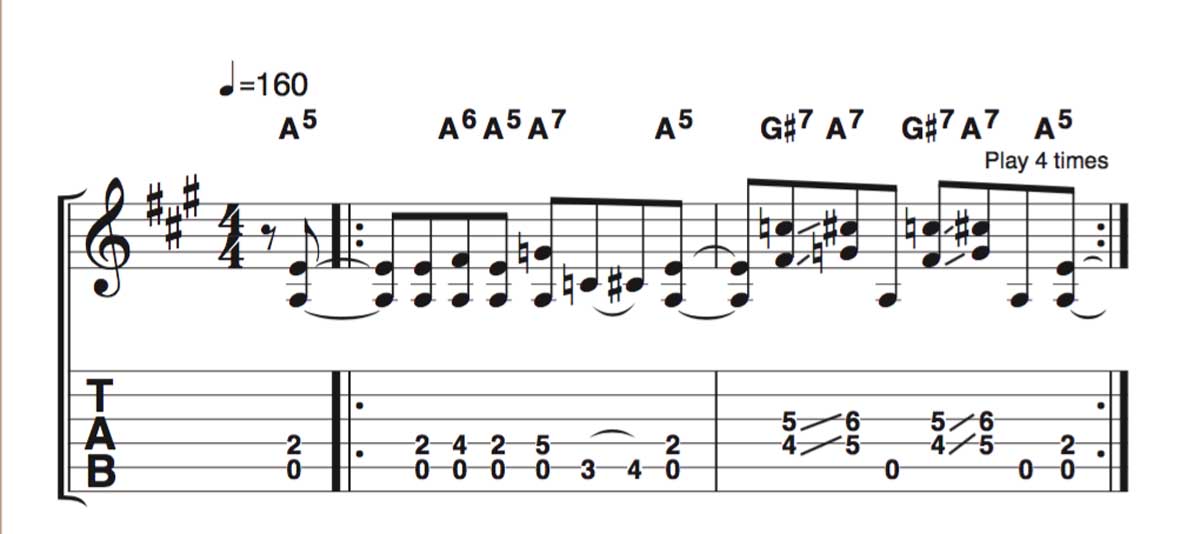
Page’s Chuck Berry influence can be heard from Rock And Roll to Boogie With Stu. Here the classic boogie riff is given a Page-style chordal twist.
3. Palm-mute the bass strings
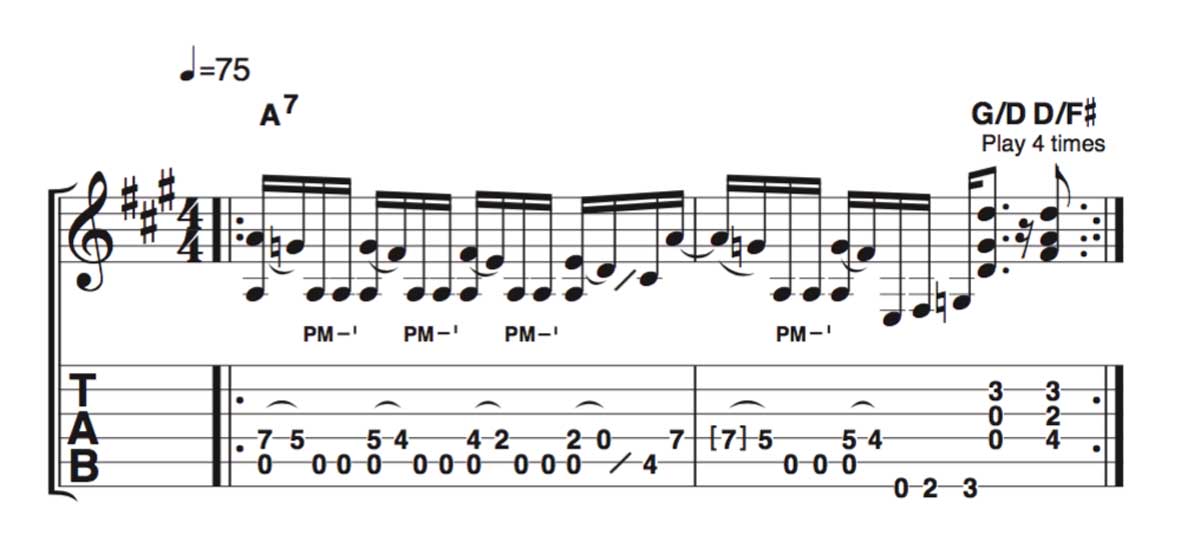
This style of riff as heard in What Is And What Should Never Be influenced countless acts, from AC/DC to the Foo Fighters – simply keep the fifth string muted and the fourth-string notes clean.
4. Unsettle the groove

Jimmy employed rhythmic displacement in Black Dog and Kashmir. ‘What’s rhythmic displacement’, you ask? Well, if your riff is, say, two and a half beats long (as ours is here), it won’t sync with the downbeat on every repeat. Our riff starts on beat 1 of bar 1 then repeats half way through beat 3.
20 ways to play like Jimmy Page – Altered tunings
Changing the tuning on your guitar is like learning another language. And it’s a language Jimmy Page speaks fluently, having explored several altered tunings with Zeppelin.
Moby Dick is a good place to start – played in drop D (DGDGBE), it’s the easiest non-standard tuning of ’em all. But Jimmy used others too, and though he’s famed for using DADGAD (notably on Kashmir and Black Mountain Side), we should draw your attention to open C6 (CACGCE) and open A (E A E A C# E), too.
5. Open G (D-G-D-G-B-D)

Used famously in That’s The Way and Black Country Woman, open G is but one of many tunings in the Page playbook. Our example shows some typical Jimmy-style two-note shapes with open strings droning in the background creating, rich and dense harmonies.
6. D-A-D-G-A-D

Jimmy’s extensive use of DADGAD tuning was inspired by two of his favourite guitarists, Bert Jansch and Davey Graham – check out Black Mountain Side and Kashmir for Page’s most notable examples. Once again, notice how simple shapes and open strings combine here in our example.
7. Open C6 (C-A-C-G-C-E)

Though there are several potential tunings that can make up a C6 chord, this is Page’s preferred one, as used in Bron-Yr-Aur and Friends. Our passage also uses a variation on the Travis picking method from DADGBD-tuned Going To California, so you’re getting a whole lotta Page here!
8. Open A (E-A-E-A-C#-E)

Here we’re looking at open A tuning, as used by Jimmy in the slide-guitar classic In My Time Of Dying (and by Jack White many years later on Seven Nation Army). Place your slide on either your third or fourth finger and keep any fingers behind the slide resting on the strings to prevent excess noise.
20 ways to play like Jimmy Page – Soloing
Blues and traditional rock ’n’ roll are at the core of Page’s soloing style, especially in the early days on Led Zeppelin’s debut – so there are some pentatonic basics to cover.
Heartbreaker’s breakdown solo, for example, gives you an idea of Page’s unending creativity though, as he explored fret-hand legato and some wacky string bends. There’s a lot to get your teeth into here, so make sure to take it slowly and break each of our licks down phrase by phrase.
9. Rapid-fire legato lead

These fast, blues-based legato licks are heard throughout Jimmy’s solo work – and he’d often improvise around ideas like these. Aim to execute those rapid-fire hammer-ons and pull-offs cleanly. This might mean slowing right down to develop your technique.
10. Repeating phrases

These triplet pentatonic sequence ideas are commonplace in Jimmy’s lead playing. Apply the pattern to the pentatonic scales you already know.
11. Up-picking
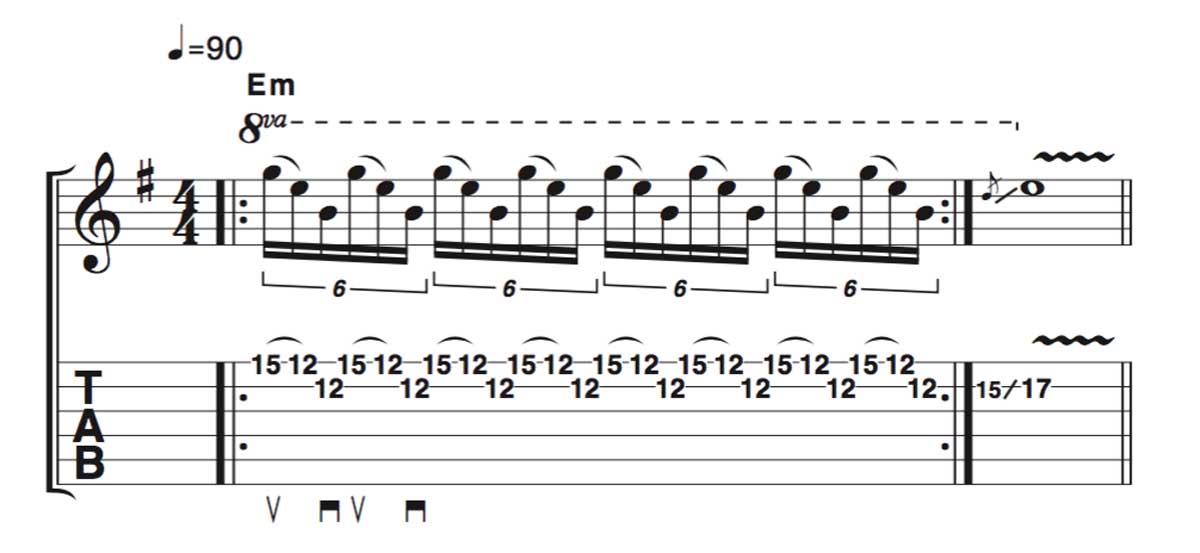
As heard in songs such as Stairway To Heaven and Dazed And Confused, Jimmy picks this kind of lick by starting on an upstroke to keep him in prime position
12. Rock 'n' roll influence

Jimmy’s Chuck Berry influence shows itself in these typical repeating string bends. The held bend in the second bar however is more of a country-blues innovation that can be heard in the solo on Stairway To Heaven. It’s a great alternative idea when playing standard minor pentatonic licks.
13. More rhythmic displacement

This is a classic Page-style ‘milk the lick’ idea that can be transposed and played over any blues track – just rinse and repeat! Notice the rhythmic displacement at play here: the lick is one and a half beats long, so it doesn’t simply repeat on the beat every time.
14. Wide string bends

Jimmy is fond of huge three- or four-semitone bends within the blues scale. You can hear them in songs such as You Shook Me and Whole Lotta Love – and here in our example, which kicks off with a big bend.
15. Blues roots

As a young man, Jimmy listened to blues legends such as BB King, Buddy Guy, Otis Rush, Freddie King and more – and you’ll hear their influences throughout his playing. This lick alone covers much of Jimmy’s phrasing ideas on early Led Zeppelin songs like I Can’t Quit You Baby.
20 ways to play like Jimmy Page – Tone Tips
16. Classic Tones – Physical Graffiti-era Phaser/Overdrive
PHYSICAL GRAFFITI-ERA PHASER/OVERDRIVE
A core Les Paul sound with a touch of swirly phaser – just check out The Rover and you’ll get the idea. Jimmy was known to use MXR Phase 90 pedals during his time in The Firm. Paired with a Les Paul and a crunchy Marshall amp, it’s an easy tone to dial in.
Rig: Gibson Les Paul Standard, Marshall JMP Super Lead, MXR Script Phase 90
Amp settings: Overdrive channel, Gain 5, Bass 5, Mid 7, Treble 8, Reverb 3
17. Classic Tones – Led Zeppelin I
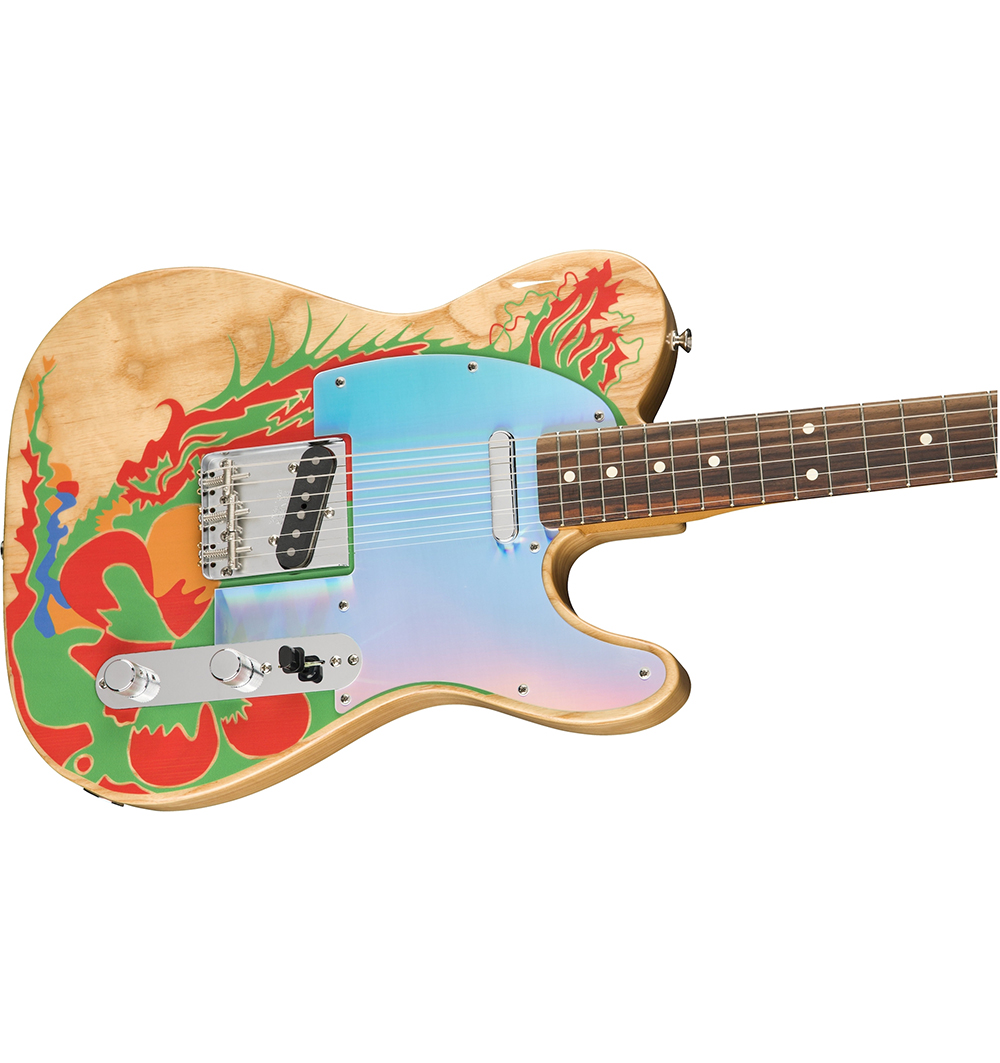
LED ZEPPELIN I-ERA FUZZ TONES
The essential ingredients for a fuzz tone circa Led Zeppelin I are a single-coil equipped guitar (preferably a Telecaster), a fuzz pedal and fairly clean sounding valve amp. The fuzz will push the highs hard, so wind the treble back on the amp if you need to.
Rig: Fender ‘Dragon’ Telecaster, Sola Sound Tone Bender Professional Mk II fuzz pedal, Supro Coronado 1690T
Amp settings: Clean channel, Gain 2, Bass 6, Mid 8, Treble 6, Reverb 3
18. Classic Tones – Down by the Seaside-style
DOWN BY THE SEASIDE-STYLE TREMOLO/DELAY
It’s a deeper cut in the Zeppelin back catalogue, but Down By The Seaside needs all your tonal knowhow to dial it in. You’ll need a deep tremolo effect running through a clean channel. Compression and delay help those chords to sustain.
Rig: Fender Telecaster, Vox AC30, Compressor, Tape delay (eighth note repeats). Tremolo (intensity set at 8 and speed at 8)
Amp settings: Overdrive channel, Gain 3, Bass 5, Mid 7, Treble 8, Reverb 3
19. “Toes Down” Wah Solo Tone
“TOES DOWN” WAH SOLO TONE
Essentially the same as our ‘Zeppelin I’-era sound, but with the benefit of a cranked wah pedal adding another level of drive. Page’s model was a UK-built ‘grey’ Vox wah, with a distinctive sound.
Rig: Fender Telecaster, Sola Sound Tone Bender Professional Mk II fuzz pedal, Supro Coronado 1690T, fully-cocked Vox wah pedal.
Amp settings: Overdrive channel, Gain 2, Bass 5, Mid 7, Treble 8, Reverb 3
20. Classic Tones – In the Evening
IN THE EVENING
Some late-Zeppelin material and lots of Jimmy’s work with The Firm featured chorus- and delay-soaked guitars – a sign of the times as the '80s arrived. Still, the core Les Paul/Marshall rig remains the same and will get you the basic tone to build on.
Rig: Gibson Les Paul Standard Marshall JMP Super Lead, Chorus pedal (medium intensity / slow regeneration), Tape delay (dotted eighth repeats / 30% feedback).
Amp settings: Overdrive channel, Gain 2, Bass 4, Mid 7, Treble 7, Reverb 3
Get The Pick Newsletter
All the latest guitar news, interviews, lessons, reviews, deals and more, direct to your inbox!
Chris has been the Editor of Total Guitar magazine since 2020. Prior to that, he was at the helm of Total Guitar's world-class tab and tuition section for 12 years. He's a former guitar teacher with 35 years playing experience and he holds a degree in Philosophy & Popular Music. Chris has interviewed Brian May three times, Jimmy Page once, and Mark Knopfler zero times – something he desperately hopes to rectify as soon as possible.
“There are so many sounds to be discovered when you get away from using a pick”: Jared James Nichols shows you how to add “snap, crackle and pop” to your playing with banjo rolls and string snaps
Don't let chord inversions bamboozle you. It's simply the case of shuffling the notes around








![Joe Bonamassa [left] wears a deep blue suit and polka-dotted shirt and plays his green refin Strat; the late Irish blues legend Rory Gallagher [right] screams and inflicts some punishment on his heavily worn number one Stratocaster.](https://cdn.mos.cms.futurecdn.net/cw28h7UBcTVfTLs7p7eiLe.jpg)


